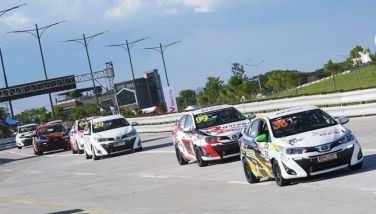Facing fan violence
Taking off from last Saturday’s piece on violence in sport, this columnist has done research on the vast steps being taken in other countries – particularly European nations – to curtail violence in sport, first by fans, who sometimes even organize fights leading up to major sporting events (mostly soccer matches). Great resources, time and effort have been dedicated not just by sporting associations, but by the European Union, individual countries and local governments to try to sway the public against being involved in violence before, during and after football games.
In an extensive report over a decade ago, the Sports Department of the Council of Europe and the Congress of Local and Regional Authorities of the Council of Europe gathered experts from different fields and published “Responses to violence in everyday life in a democratic society” with a section focused on “Prevention of violence in sport. It is authored by John de Quidt and Elizabeth Johnston. De Quidt had been the Chief Executive of the Football Licensing Authority since the early 1990’s, and had overseen the formulation and implementation of major improvements in the design, spectator facilities, regulation and safety management of football stadia in England and Wales. These changes were spurred by what is now known as the Hillsborough Disaster. On April 15, 1989, a semifinal match between Liverpool and Nottingham Forest erupted into unrestrained violence, leaving 96 Liverpool fans dead and 766 injured. The ensuing mess raised a desperate call for widespread reforms in security and protocols for large sporting events. De Quidt also advises the British government on spectator safety at major international tournaments overseas and at British stadiums hosting other sports.
Johnston, meanwhile, has been Deputy Executive Director of the European Forum for Urban Safety. The forum is a network of more than 300 cities that supports local security policies and promotes exchanges of practices and expertise. Since 1998, in the framework of the European Forum for Urban Safety, she has helped set up local security policies and published studies, and has worked with the forum’s external partners.
The first thing the published work determined was the effect of violence at sports events on the general public. The report stated that violence deters families, women, children, the elderly, persons with disabilities and event ethnic minorities from going to games. This recalls the Philippine NCAA brawls of the 1970’s, which caused unusual occurrences like closed-door championship games. The report also stated that violence created a climate of fear among local residents. Remember the outbreak of fan violence during celebrations of NBA championships in Los Angeles and a few other cities? Violence also ties up police and medical personnel, and disrupts utility repairs in the vicinity.
One disturbing trend noticed (though it does not apply to the Philippines in general) was how organized hooliganism had become. It no longer revolved around the match. Violence would even occasionally erupt on public transportation in the days leading up to major football events, and after matches. Ironically, the use of improved telecommunications served as a means to put together planned fights which caused further problems for authorities. As the report stated:
“...it is no longer concentrated during the match, or even the period during which spectators are travelling to or from the stadium. Indeed, the participants may not have attended the match. Fights may be arranged between organized groups, using modern means of communication such as the internet or mobile phones, at venues far from the stadium. During international tournaments, violence can occur wherever large groups of visiting supporters have congregated. This is as likely to involve elements of the local population as supporters of other teams. Excessive alcohol consumption may often exacerbate the problem.”
But there is some good news, as De Quidt noted, many local or regional authorities in Europe have already exercised some oversight powers over construction of stadiums, though they usually look at the venues’ structural integrity. They neglect how the design of the stadium, its location and exit and access routes, as well as its facilities, concessionaire stands and comfort could have a significant impact on the behavior of spectators. In the early 1990’s, this writer was consulted on the layout of Cuneta Astrodome, since it was going to be a venue for PBA games. Back then, the main concern was placement and movement of our broadcast equipment, to make the place more TV-friendly. Sadly, ultimately none of my advice was taken into consideration.
In the case of overflow crowds setting up large viewing screens outside of the venues was something first attempted in Europe and the US as recently as two decades ago. This creates new challenges for maintaining public order and safety. As Valery Karnaukhov, Deputy Head of the Chief Department of Internal Affairs of Moscow City reported, “Although the audience is not very different from that inside the stadium, the methods of maintaining public safety in those circumstances differ. As there are no tickets, no accreditation, it is impossible to determine in advance the number of people who will attend. Measures to restrict spectator access and to reserve passageways must be taken.”
- Latest
- Trending

































